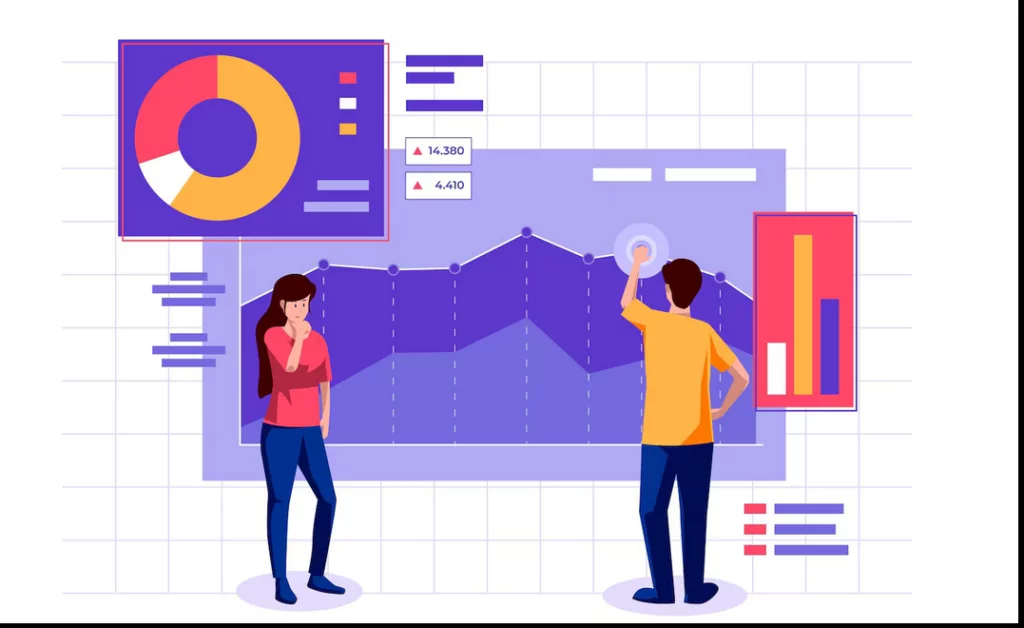In the fast-paced world of digital marketing, where a business’s online presence can determine its success or failure, Search Engine Optimization (SEO) emerges as a critical factor. However, the landscape of SEO is in constant flux, with evolving best practices and algorithm updates posing a challenge for businesses. This is where SEO Standard Operating Procedures (SOPs) shine, providing a structured roadmap for navigating the intricacies of optimization.
Consider these compelling statistics:
- A study by BrightEdge reveals that organic search drives a whopping 51% of all website traffic, solidifying its position as the primary source of traffic for businesses.
- HubSpot‘s findings indicate that a staggering 75% of users never venture beyond the first page of search results, underscoring the imperative of securing a top-ranking position.
- According to the Content Marketing Institute, businesses that maintain an active blog garner an impressive 97% more links to their website, highlighting the profound impact of content optimization on SEO success.
Understanding SEO SOPs
An SOP, or Standard Operating Procedure, is a dynamic document delineating the steps involved in recurring tasks. Typically, it includes detailed instructions, supplemented by screenshots or videos. Therefore, an SEO SOP outlines the systematic approach to executing search engine optimization tasks on your website.
Importance of SEO SOPs:
- Consistency in Optimization: Consistency is key in SEO, as search engine algorithms favor websites that consistently provide high-quality content and adhere to best practices. SEO SOPs establish standardized procedures for on-page and off-page optimization, ensuring that every aspect of the website is optimized according to a predefined strategy. This consistency helps build authority and trust with search engines, ultimately leading to improved rankings and visibility.
- Scalable Practices: As businesses grow, so do their SEO needs. Scalable SEO practices are essential for accommodating this growth without sacrificing efficiency or effectiveness. By documenting and standardizing SEO processes through SOPs, businesses can easily scale their optimization efforts to meet evolving demands. Whether it’s expanding into new markets, launching additional product lines, or increasing content production, SEO SOPs provide a framework for seamless scalability.
- Simplified Delegation: Delegating SEO responsibilities can be challenging without clear guidelines and procedures in place. SEO SOPs simplify this process by clearly outlining roles, responsibilities, and tasks associated with optimization efforts. Whether delegating tasks to assistants, in-house employees, or external agencies, having SOPs ensures that everyone understands their roles and follows standardized procedures. This not only increases efficiency but also minimizes the risk of errors or inconsistencies in execution.
- Reliable and Predictable Outcomes: In the world of SEO, results are often the product of consistent, methodical efforts over time. SEO SOPs lay the groundwork for achieving reliable and predictable outcomes by establishing proven processes and best practices. By following standardized procedures, businesses can mitigate the risk of trial-and-error approaches and increase the likelihood of success in their optimization endeavors. Whether it’s improving search rankings, increasing organic traffic, or driving conversions, SEO SOPs provide a roadmap for achieving desired outcomes.
Strategies to Incorporate for SEO SOPs:
1. Choose the right tool:

Establishing a robust SEO Standard Operating Procedure (SOP) requires careful selection of the appropriate tools. For WordPress users, having the right plugins is crucial.
Here are some key features to look for when selecting SEO tools:
- Search Statistics: Integration with platforms like Google Search Console allows effortless monitoring of keyword rankings and access to vital SEO metrics.
- Schema Markup Generator: Tools that simplify the implementation of structured data markup without requiring coding expertise can enhance a website’s visibility in search results.
- Redirection Management: Simplify the handling of redirects and the correction of 404 errors, ensuring a smooth crawling and indexing process for search engines.
- Link Management: Automation of internal linking and comprehensive outbound link audits can improve site structure and authority, positively impacting search engine rankings.
- SEO Preview: Insights into how a website will appear in search and social media snippets can guide optimization efforts for improved visibility.
- Rapid Indexing Support: Tools that support protocols like IndexNow facilitate swift indexing on search engines, ensuring timely updates are reflected in search results.
- Sitemap Generation: Automatic generation of various types of sitemaps, such as XML and HTML sitemaps, promptly notifies search engines of any updates to the website, aiding in better crawling and indexing.
2. Thoroughly Documented Keyword Research Guidelines:

In the endeavor to form an SEO Standard Operating Procedures (SOPs) that effectively enhance organic traffic, it is imperative to meticulously document and standardize the process of keyword research. Establishing clear guidelines within your SEO SOPs regarding how keyword research is to be conducted is crucial. These guidelines should encompass various key aspects:
- Selection of Keyword Research Tools: Your SOPs should specify the tools to be utilized for conducting keyword research. This could include popular platforms such as Google Keyword Planner, SEMrush, Ahrefs, or Moz Keyword Explorer, among others. Defining the tools ensures consistency and reliability in the research process.
- Targeted Keywords: Clearly outline the types of keywords that your SEO strategy aims to target. This might involve long-tail keywords, short-tail keywords, branded keywords, informational keywords, transactional keywords, or other specific categories relevant to your niche and target audience.
- Identification of Search Intent: Incorporate guidelines regarding the consideration of search intent when selecting keywords. Understanding the intent behind users’ search queries (such as informational, navigational, commercial investigation, or transactional intent) is essential for crafting content that aligns with users’ needs and expectations.
- Determination of Keyword Difficulty Threshold: Establish a maximum keyword difficulty level that your SEO efforts will target. This involves assessing the competitiveness of keywords based on factors like search volume, competition, and the difficulty of ranking for those keywords. Setting a threshold ensures that you focus on keywords where you have a realistic chance of achieving high rankings.
3. Comprehensive Standardization of Content Creation:

In the journey towards crafting SEO Standard Operating Procedures (SOPs) that wield significant impact, the standardization of content creation processes emerges as a pivotal step. This entails the development of a meticulous style guide that encompasses a diverse array of elements, fostering consistency and excellence across all content produced. Here’s a detailed breakdown of what your style guide should include:
- Tone and Voice: Define the desired tone and voice for your brand’s content. Whether it’s formal, conversational, authoritative, or playful, ensuring consistency in tone across all content pieces is essential for maintaining brand identity and resonance with your target audience.
- Blog Post Structure: Outline a standardized structure for blog posts, including sections such as introduction, main body, conclusion, and any additional elements like subheadings, bullet points, or multimedia components. This structure enhances readability and user engagement while aligning with best practices for SEO.
- Words to Avoid: Provide a list of words or phrases to avoid in your content, whether due to their negative connotations, lack of relevance, or inconsistency with brand messaging. This helps maintain professionalism and reinforces brand integrity.
- Handling of Competitors: Establish guidelines on how to discuss competitors within your content, ensuring fairness, accuracy, and professionalism. This may involve refraining from disparaging remarks and instead focusing on highlighting your brand’s unique value propositions and strengths.
- Grammar and Punctuation Conventions: Specify grammar rules, punctuation conventions, and formatting guidelines to maintain consistency and clarity in written communication. This includes rules for capitalization, use of serial commas, hyphenation, and more.
- Additional Considerations: Address any other pertinent aspects relevant to content creation, such as preferred writing style (e.g., AP style, Chicago style), citation guidelines, inclusion of internal or external links, image attribution requirements, and SEO optimization techniques.
4. Elevating Your SEO with Effective Link Building Strategies:

In search engine optimization (SEO), the significance of internal and external links cannot be overstated. Studies consistently reveal that links are among the top three ranking factors, underscoring the critical role they play in enhancing the visibility and authority of your website. To leverage the full potential of links and maximize their impact on your SEO, it is essential to establish a standardized link building process. Here’s a detailed exploration of best practices for internal and external link building:
a. Internal Link Building:
Internal links are hyperlinks that connect one page of a website to another page within the same domain. They facilitate navigation, distribute link equity, and establish hierarchies and relationships between pages. Utilizing a tool like Link Assistant can streamline the internal link building process. This AI-powered tool conducts a comprehensive crawl of your website, generating a detailed report of all internal links present.
b. External Link Management:
External links, also known as outbound links, are hyperlinks that point from your website to another domain. While external links can contribute to your site’s credibility and authority, it’s crucial to exercise discretion and ensure they lead to reputable and relevant sources. Additionally, acquiring backlinks from authoritative external sites can significantly boost your website’s SEO performance.
c. Integration and Optimization:
Efficiently integrating internal and external links into your content is crucial for maximizing their SEO benefits. Ensure that anchor text is descriptive and relevant, providing users and search engines with clear indications of the linked page’s content. Additionally, regularly review and update your internal linking structure to reflect changes in your website’s architecture and content hierarchy.
5. Effective Monitoring and Resolution of Broken Links:

In website management and search engine optimization (SEO), the presence of broken links can pose significant challenges. These broken links, which lead to non-existent or inaccessible web pages, can result in 404 errors, negatively impacting user experience (UX) and potentially causing a decline in search engine rankings. Therefore, it is imperative to establish a standardized procedure for identifying and rectifying broken links on your website. Here’s a detailed guide on how to monitor and fix broken links efficiently:
Once broken links are identified, the next step is to take corrective action to resolve them. Here’s how you can address broken links effectively:
- For Internal Links: Utilize the Redirection Manager feature within your SEO plugin to redirect broken pages to relevant and functional ones within your website. This ensures that visitors are seamlessly redirected to alternative content, preserving their browsing experience and preventing 404 errors.
- For External Links: If a broken link points to an external website, you have two options: unlinking or editing the URL. Unlinking removes the broken hyperlink altogether, eliminating the possibility of users encountering a dead end. Alternatively, if an alternative and relevant URL can be found, you can edit the link to redirect users to the updated destination.
6. Comprehensive Image Use and Optimization Guidelines:

Images serve as integral components of compelling content, enhancing engagement and visual appeal for website visitors. Moreover, when optimized effectively, images can contribute significantly to improving search engine rankings. As such, it’s essential to establish image use and optimization guidelines within your SEO Standard Operating Procedures (SOPs). Here’s a detailed breakdown of factors to consider and include in your SOPs:
a. Image Size and Format: Specify recommended image dimensions and file formats to ensure optimal performance and compatibility across different devices and platforms. This includes considerations for responsive design and page loading speed, as larger image files can adversely impact site performance.
b. Image Sourcing: Define protocols for sourcing images, including preferred sources such as stock photo libraries, in-house photography, or licensed images. Emphasize the importance of obtaining images from reputable sources to avoid copyright infringement issues.
c. Image Naming Conventions: Implement standardized naming conventions for image files that are descriptive and keyword-rich. This enhances the relevance and discoverability of images by search engines, contributing to improved visibility in image search results.
d. Alt Text and Description Guidelines: Emphasize the importance of providing descriptive alt text and image descriptions for accessibility and SEO purposes. Alt text should accurately describe the content and context of the image, incorporating relevant keywords where appropriate.
e. Image Compression and Optimization: Provide guidelines for optimizing images for web use, including techniques such as compression to reduce file size without compromising quality. Optimized images contribute to faster page loading times and improved user experience, factors that are crucial for SEO.
f. Standardization for Consistency: Standardizing image usage and placement ensures a cohesive visual experience for website visitors across all pages and posts. Consistency in image styling, placement, and formatting enhances brand identity and reinforces the overall aesthetic appeal of the website.
7. Proactive SEO Performance Monitoring

Effective SEO performance monitoring involves systematically tracking and analyzing various metrics to assess the effectiveness of your optimization efforts and identify areas for improvement. This ongoing evaluation provides valuable insights into the performance of your SEO strategy and informs strategic adjustments to enhance visibility and rankings on search engine results pages (SERPs).
To facilitate comprehensive performance auditing, consider tracking key metrics such as:
- Organic Traffic: Measure the volume of website visitors acquired through organic search channels to gauge the effectiveness of your SEO efforts in driving user engagement.
- Click-Through Rate (CTR): Evaluate the percentage of users who click on your website’s search result listings relative to the total number of impressions, indicating the relevance and appeal of your content to searchers.
- Keyword Rankings: Monitor the positions of target keywords on SERPs to assess their impact on search visibility and identify opportunities for optimization.
- Page Speed: Evaluate website loading times to ensure optimal performance and user experience, as faster-loading pages are favored by both users and search engines.
8. Addressing Content Decay: A Vital Component of SEO SOPs

Content decay refers to the gradual decline in organic performance observed in content specifically optimized for search engine optimization (SEO). Unlike sudden drops in performance, content decay manifests as a slow erosion of rankings and visibility over time.
Despite its subtle nature, content decay poses a significant threat to SEO performance, undermining efforts to maintain or improve rankings on search engine results pages (SERPs). Left unaddressed, content decay can lead to dwindling organic traffic and revenue.
Incorporating strategies to combat content decay into your SEO Standard Operating Procedures (SOPs) is crucial to sustaining and enhancing your website’s performance.
To identify instances of content decay, leverage tools like AIOSEO’s Search Statistics module. By accessing the Content Performance tab within Search Statistics, you can assess the performance of individual articles, identifying those experiencing a decline in rankings.
Once decaying content is identified, taking corrective action to halt its decline and bolster rankings becomes feasible.
Conclusion:
In conclusion, developing comprehensive SEO SOPs is an essential endeavor for small businesses seeking to enhance their online presence. Although crafting these protocols may entail initial investment in time and effort, the long-term benefits include expedited and more efficient execution of SEO tasks, as well as the establishment of repeatable processes for driving organic traffic.
FAQs on SEO SOPs:
How do SEO SOPs align with other marketing strategies?
SEO SOPs should be integrated with other marketing strategies to ensure consistency and synergy across all channels. For example, SEO SOPs may align with content marketing strategies by providing guidelines for keyword optimization and content creation. They may also complement social media marketing efforts by optimizing content for sharing and engagement.
Can SEO SOPs help with website maintenance and troubleshooting?
Yes, SEO SOPs can be valuable for website maintenance and troubleshooting. They often include protocols for addressing technical issues, such as broken links, duplicate content, or site speed optimization. Additionally, they may outline procedures for monitoring website performance metrics and diagnosing SEO-related issues.
How can businesses ensure compliance with SEO SOPs?
Businesses can ensure compliance with SEO SOPs by providing training and resources to employees responsible for SEO tasks. This may include conducting regular training sessions, creating documentation and tutorials, and implementing quality control measures to verify adherence to SOPs. It’s also important to foster a culture of accountability and continuous improvement within the organization.



